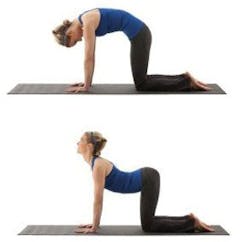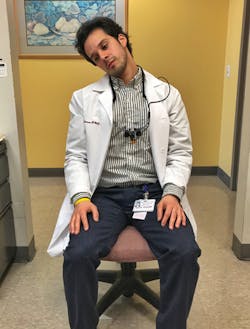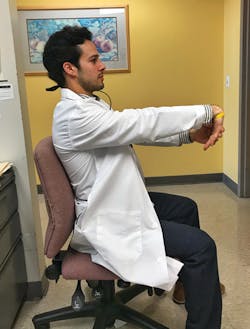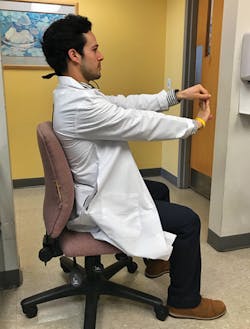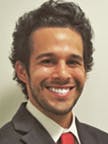How to spring-clean your body
Eric Strouse, DMD
Spring isn’t just a time to organize the clutter in your office and tidy up your practice finances. It is the perfect time to give your body a spring-cleaning. New Year’s may be the more traditional time to implement changes, but spring is the perfect time to implement some internal changes, tune-up your body, and allow yourself to continue providing quality, pain-free care for both yourself and your patients.
Whether you practice in a high-volume, fast-paced setting or in a setting with a slower pace of care, there is no doubt that you’re pulled in many directions during the day. From patient care to staff concerns to finances and more, so many stresses during the day make it easy to forget to take care of your own body. Our work as dentists puts stress on our bodies, and everyone has their own problem areas.
When it comes to physical health, prevention is key. It is not easy to make changes to our routine and find time to add stretching to our already-busy clinical days. We use systems in our practices for optimal efficiency. Listed below are some simple ways to add you to your systems without wasting any time in your day and yet allowing you time to maintain your health.
Morning: “The Cat-Camel Stretch” (figure 1)
What better time to start your body’s spring-cleaning than upon waking? Try priming your body for the day in the gentlest way to mobilize your back with the cat-camel stretch. Mobility expert Kelly Starrett, author of Becoming a Supple Leopard, cites this as one of the top three exercises you should do every day.1 The cat-camel is most applicable to the rigors of dentistry.
Begin on your hands and knees with the head relaxed. Tighten your abdominal muscles as you inhale, bringing your stomach toward the floor as your arch your back, drawing your chin toward the ceiling. Hold for a count of two. Maintaining firm abdominals, exhale as you round your spine, drawing your chin to your chest, feeling a gentle stretch throughout your back. Continue breathing for a count of two. Repeat this motion back and forth five to 10 times. Some individuals like to hold each part of the exercise for a longer period of time.
Between patients:
“The Posture Reset” (figure 2)
Take a few moments between patients or while waiting for a radiograph to try this posture resetting exercise. Not only will this strengthen the muscles of the back and shoulders, but it will encourage optimal posture and allow your body to work more efficiently after.
Stand tall and drop your shoulders to relieve neck tension. Point your chest up and out, shoulders down, and imagine pulling your shoulder blades down into a V. Turn your thumbs out, rotated externally, with your thumbs up, and separate your fingers. Hold for a count of one. Repeat 10 times.
Break in the action: “The Neck and Wrist Series” (figure 3)
Make use of small breaks during a procedure to reset some of your strained muscles. Two perfect areas to work on are the neck and wrists. These exercises can be done in the chair during your “microbreaks,” such as during light curing, the perfect time to help reverse ischemic damage from the static postures throughout the day.2
Neck: Sitting in your chair in a neutral position, breathe in, and on the exhalation, slowly drop your right ear to the right shoulder without lifting your shoulder or turning your head. Hold for one to two breaths and return to neutral. Repeat on the other side. Addition: Try bringing your chin up and toward your chest as well, to release the front and back of the neck.
Wrist: Extend your right arm out parallel. Bend at your wrist pointing your fingers toward the floor. With your other hand, gently bend the wrist further to feel a moderate stretch. Hold for a count of two and repeat on the other side.
Next, extend your arm parallel and point your fingers toward the ceiling, bending at the wrist in the opposite direction. With your other hand, pull your fingers back as you feel a stretch in the flexor muscles. Hold for a count of two. Repeat on the other side.
Clinical notes:
“The Figure 4” (figure 4)
While at your desk writing a note, use this time to tune-up the hips, glutes, and piriformis. This is an ideal time to get some fresh blood flow to these areas that became static after a long procedure, preparing you for your next patient.
Seated in a chair, place one foot on top of your other knee, creating a figure four position. Place one hand on your knee and the other on your ankle as you sit tall. Bend at the waist and lean slightly forward, bringing your chest closer to your leg to intensify the stretch. Hold for 10 to 20 seconds and switch.
I have discussed here some easy, implementable tips for jump-starting a routine or adding to your current regimen. There are countless stretches and exercises that are beneficial to dental professionals to target various problem areas we all develop. The most important step of all is the first one, and routine will follow. Begin by trying some of these exercises just once a week; as your body starts to feel better, you will find yourself wanting to implement these exercises more often. Use the change of season as a spring into action to help prime your body for a long and healthy career.
References
1. Ferriss T. Tools of titans: The tactics, routines, and habits of billionaires, icons, and world-class performers. Boston, MA: Houghton Mifflin Harcourt; 2017.
2. Valachi B. Stretching your way out of pain. Posturedontics website. https://posturedontics.com/stretching-your-way-out-of-pain/. Published December 29, 2017. Accessed March 9, 2018.
Eric Strouse, DMD, is a dental resident at Sacred Heart Hospital in Allentown, Pennsylvania, and a graduate of the University of Connecticut School of Dental Medicine. He was a varsity track and field athlete at Muhlenberg College and is a lifetime fitness enthusiast. He can be reached at [email protected] or (203) 278-2218.

